Today I present a selection of small trees commonly known as Mock Orange.
This might be a bit longer than most things I share. For me it is important to document as much of my collective work as possible. Feel free to skim ahead and save time if you so wish.
This is a native species that grows well in full sun and part shade. It has little resemblance to a citrus tree, except for the fact that it has white flowers with a similar shape. The flowers do not have a sweet scent, but they are beneficial to any habitat because of the many beneficial insects they attract.
Historical Information
ID: 0064
Nickname: ...
Type: Mock Orange
Age: 2 or 3 years
Grown: nursery stock
Last repotting: 2022
Wired: 2023
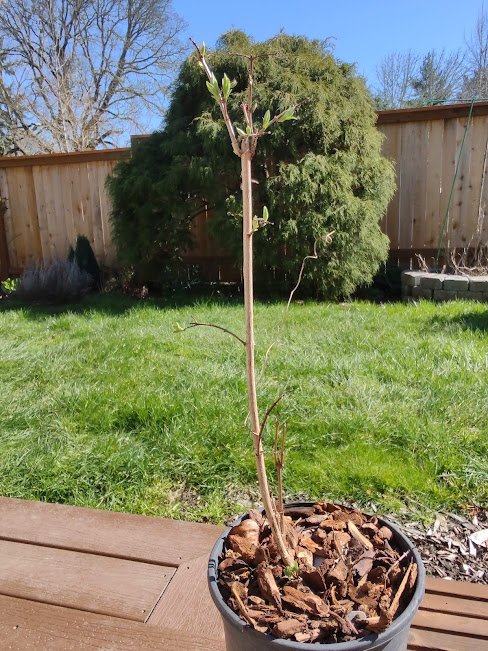
Tall and Straight
The work on these trees begins with scraping away the heavy mulch layers to expose the root base, just below the trunk.
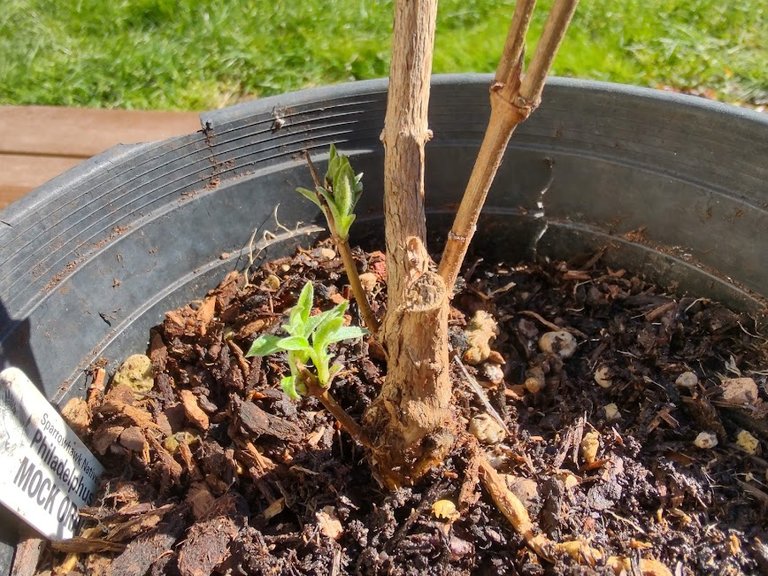
The three low branches here are loaded with vigor. See all the buds that formed recently?
On young trees that have grown too tall and skinny, I like to encourage branches and buds at the base to thicken up the trunk.
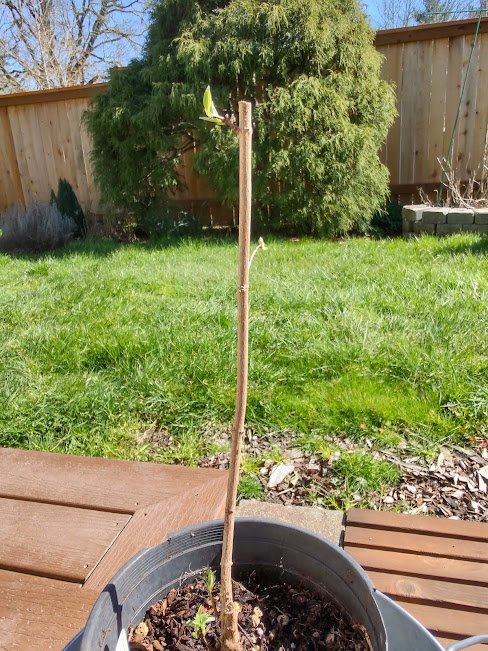
My decision was the prune the crown off this tree. This will promote more of the lower branches to receive most of the growth energy potential.
Next year, I will probably chop off the trunk even lower. Then chop lower down the next year after. Too much all at once, and I worry it will steal too much of the sap energy in the tree.
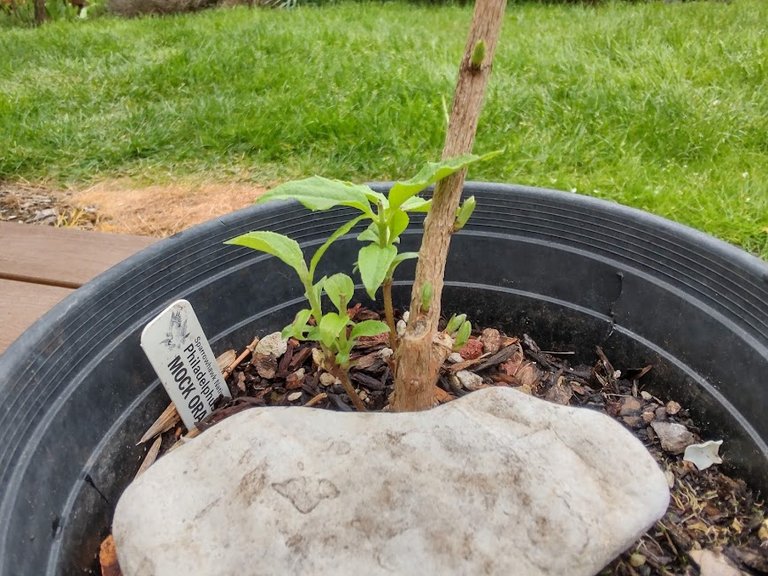
See the results for yourselves...
All these new buds formed at the base only a few weeks later.
Next year I will have plenty of choices. One of these buds will become a strong healthy branch. I will select this branch as the new leader for the trunk. A new direction in life.
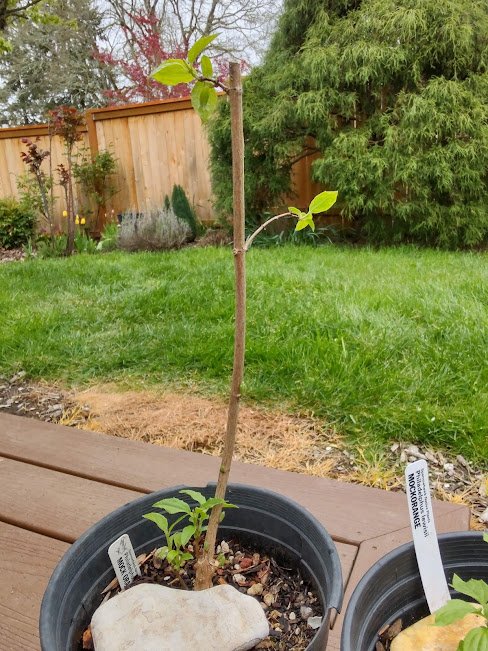
Or if we prefer, keep the current trunk, and remove the lower buds. Doing so will prompt more leaves to grow high up on top this year.
Which do you think is the better choice in this case? Short term gains, or focus on long term potential? After all, every bonsai tree is an investment of our time and choices made.
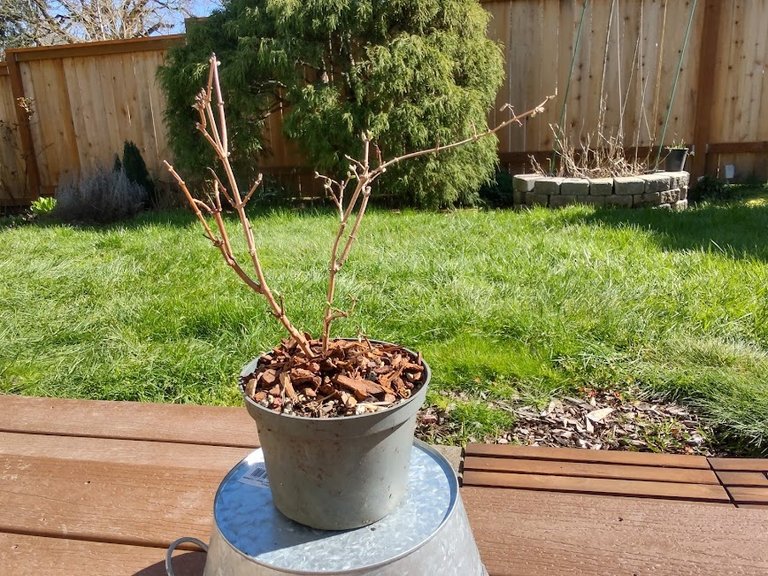
Triple Base Junction
Sounds like the name of a Count Basie song.
This next tree has more varied angles in the branches than the last tree. The various diagonal changes and Y shaped branch splits allow for more creative design choices in the future.

The triple branch division at the base is not ideal for the long term.
When too many branches are clustered together, the angles will sometimes cause a wrinkle between the join, which eventually becomes a weak point when the branch becomes heavy. It could split off and sometimes kill the tree if lots of sap flows out or becomes infected.
For now, I will not worry, as these three branches will initially benefit in swelling the trunk and roots, to make a thick and sturdy base. In future years I may decide to remove one or two of these trunks or branches, and preserve the most interesting one to grow the entire tree top from.
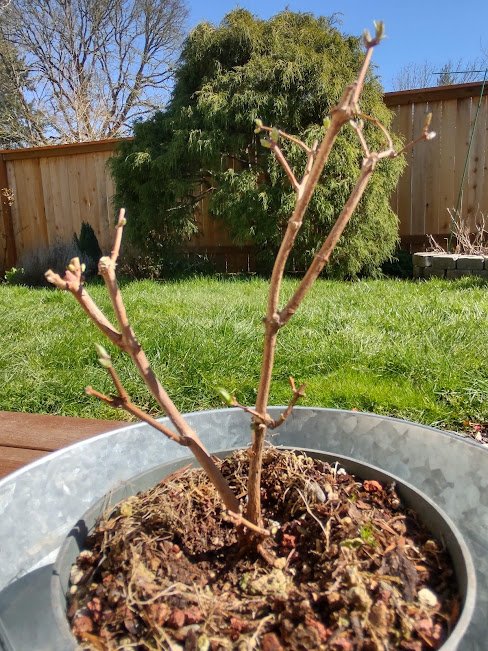
The above photo turned out quite blurry. However, you can see the branches on top were pruned off. Anywhere the limbs continued excessively in a straight direction, it was pruned off at the site where any diagonal branches formed a more interesting angle.
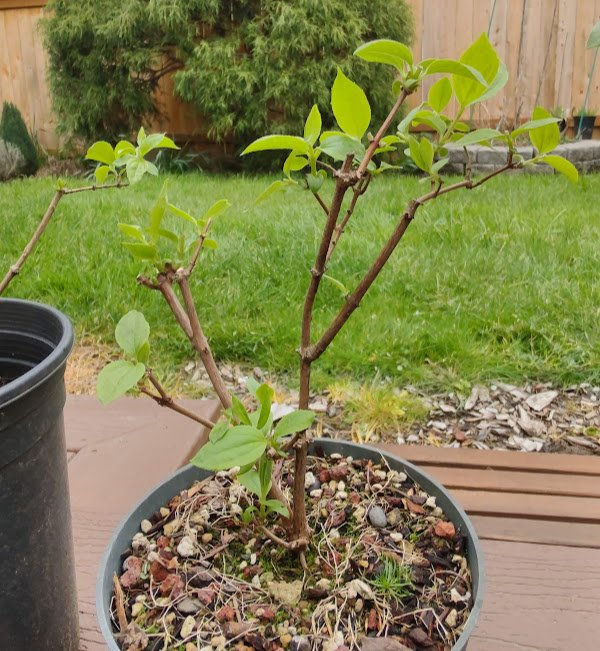
Now that the leaves have fleshed out, I can see what I want to see more of in this species of tree: the upward branches angling out in lateral directions with a full pad of leaves.
By encouraging more branches to arch up and out, I'll be able to produce a tree that appears more plump and full of many leaves in all directions.

Friendsy Frenzy Forest
In this group, we see the evidence of the Mock Orange's amazing ability to root from cuttings. Nearly any piece of these stem clusters can be easily split off, with roots in-tact, and it can be made into an entirely new tree.
Even without roots, hardwood stem cuttings will often root well in soft, wet soil, when kept in partial shade.
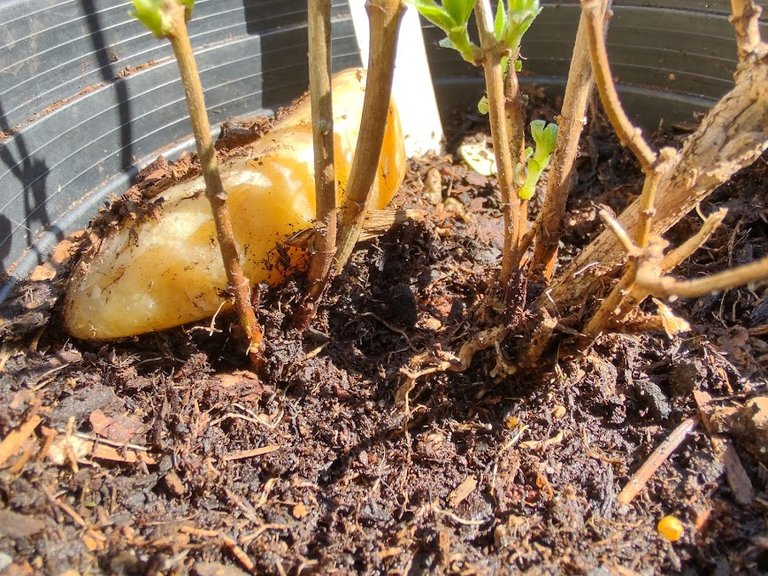
With great power also comes great responsibility, right?
Even though the Mock Orange does root very easily from cuttings, the weakness of this species is that is reacts very poorly to wiring. Any limb that is radically curved tends to die in winter. My theory is any overly stretched greenwood will develop microcracks where oxygen enters and dries out the vascular tissues. Icy temperatures perhaps cause the stretched side of bent branches to shrink and cause too much branch stress.
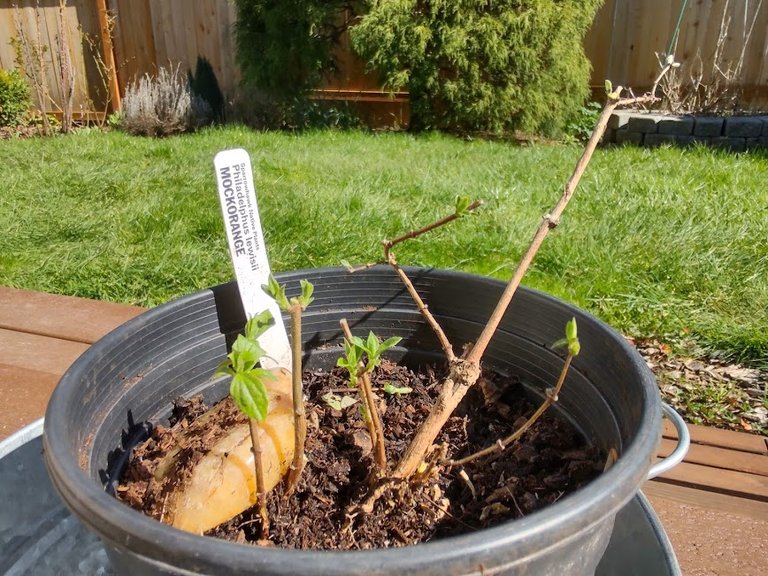
Wack!!!
Oh well! I'm chopping off all the tall weak and dead limbs that didn't survive the wiring attempt. Everything at the base is vigorous and healthy, with lots of options for interesting diagonal branching.
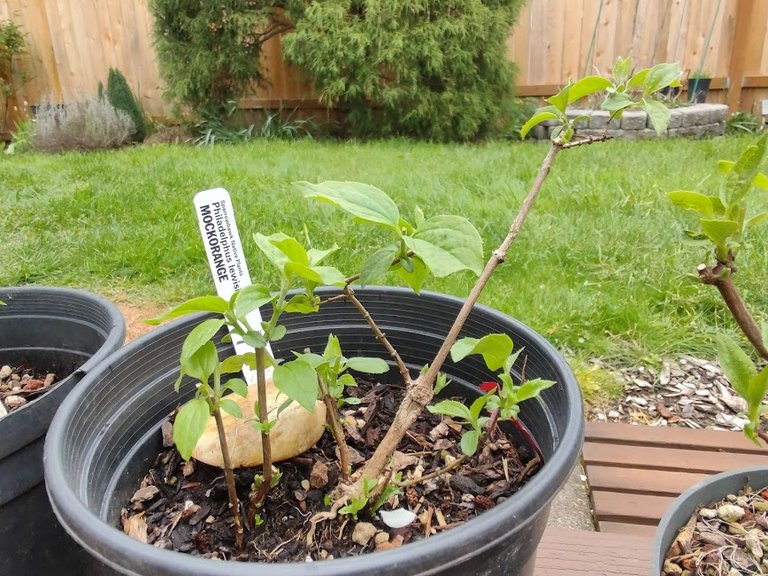
Many more buds have formed at the base and along the trunk.
When this happens, sometimes it is wise to pinch off the new buds. Alternatively, I can prune off more of last year's branches, and focus on growing out the new stems to replace them.
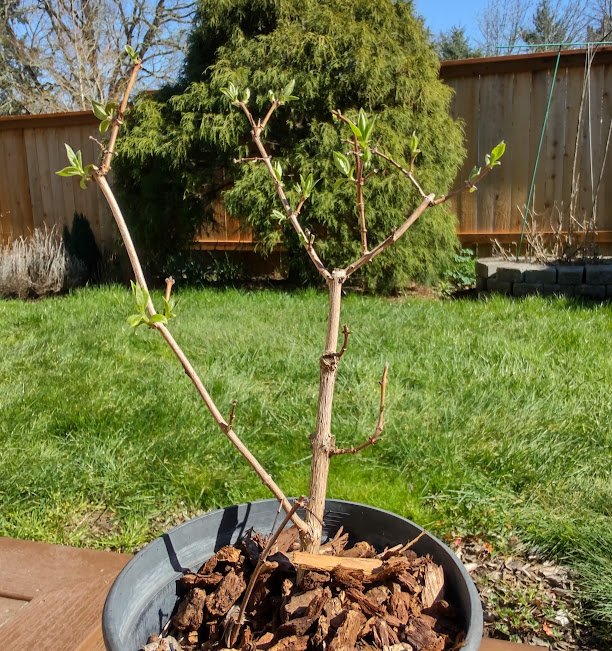
Eight Legs and Eight Arms
This tree has a thicker trunk on it.
The low branch has a nice diagonal angle, and it also has a thinner shape than the trunk. Having the thickness taper so close from the bottom is very ideal. In future years, I might opt to chop the trunk at this junction to better highlight the thinner diagonal branch as the new leader.
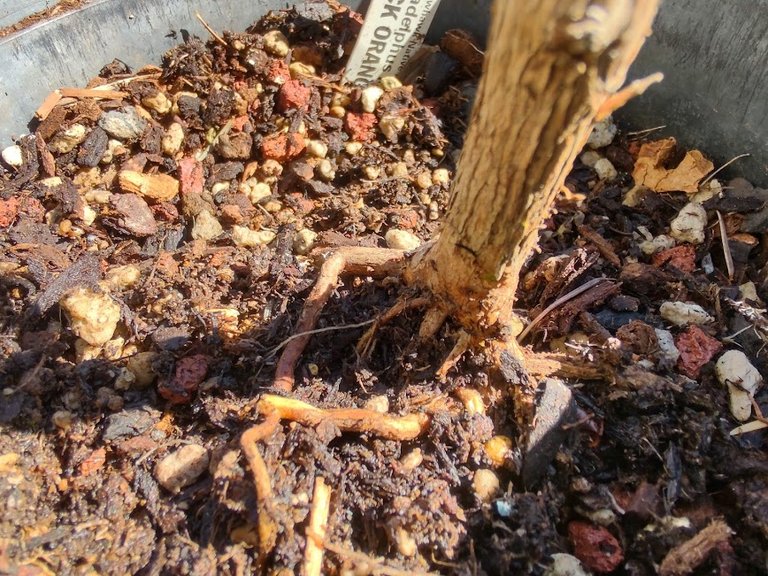
The surface roots are also very bizarre.
It is quite valuable to have so many roots thickening up on all sides around the base.
The longer overlapping roots might have to be dealt with by trimming them shorter, and burry the tips so the cut ends can form smaller rootlets.

The way I pruned this tree was to chop off everything above the lowest growing shoots on each limb. This is one basic strategy that works on many tree species to begin the bonsai process.
This strategy encourages the tree to grow from a shorter start without completely sapping its strength for the rest of the year. Leave the leaves alone!
Isn't it funny how the English language has different meanings for the word "leave", yet the meaning also infers how leaves are to be treated?
Even after all the excess I removed, I can see it will still have eight arms on it, maybe more.

This tree has already been pinched on all the new young stems. There's a couple lengthening ones I missed. New stems will be encouraged to form at the diagonal junctions where all the symmetrical leaves have formed.
Even after a few weeks, when the leaf size increases, it changes the proportions of the tree. The thick trunk no longer looks as thick in comparison to the size of the leaves.
In some plants there isn't very much a person can do to prevent the leaves from growing large. Last year I had a few Empress Trees weed themselves into my yard (I saved a few cuttings), and those leaves were almost 18 inches wide across in only the first year of growth. It's all prophesized in the DNA how the leaves will develop over the season.

This is an Empress Tree I dug up from my yard. The leaves will continue to grow larger all year long. This exotic invasive species has acorn sized nutshells and purple/blue flowers on trees that can tower far beyond 50 feet high.
Still, there are ways to decrease the leaf size, primarily in keeping the roots short enough to grow in a small container, and maximizing the quantity of leaves those roots have to support.
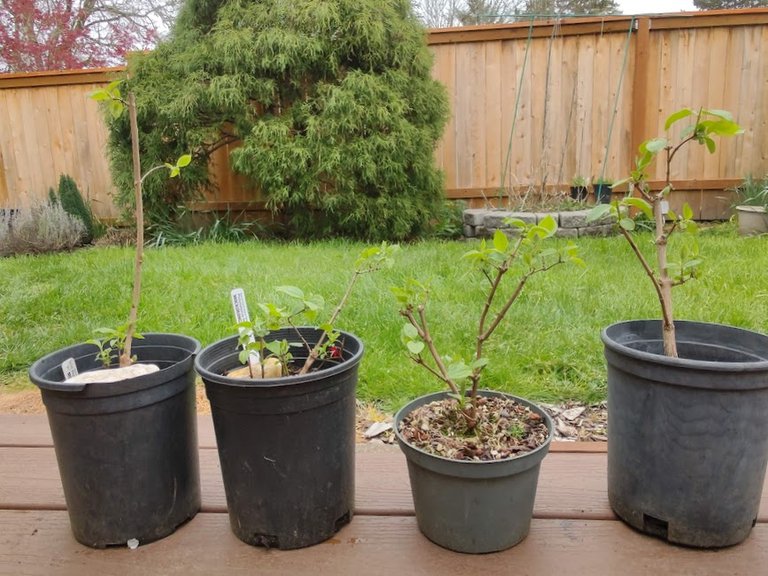
Enjoy the quiet days when nature is striving to show how much it has grown. These trees won't stay this young forever.
Photos in this post are all #originalworks by @creativetruth, unless stated otherwise.



Patience is required to even be in a position to make these decisions.
🤣😂🤣
Deep thoughts and good writing by creativetruth 👍
Congratulations @creativetruth! You have completed the following achievement on the Hive blockchain And have been rewarded with New badge(s)
Your next target is to reach 70000 upvotes.
You can view your badges on your board and compare yourself to others in the Ranking
If you no longer want to receive notifications, reply to this comment with the word
STOP